
Orthopedic Surgery in Patients with Hemophilia
15,920.00₹ 7,000.00₹
Edited by two leading orthopedic surgeons who are specialists in the treatment of hemophilia, Orthopedic Surgery in Patients with Hemophilia shows all the surgical techniques needed for surgical treatment of musculoskeletal complications of hemophilia. A practical guide, designed for use on the ward or in the office, this book draws on the experience of numerous specialists worldwide, from developed and developing countries. As well as orthopedic surgery, it also covers research, hematology, and rehabilitation. Although of primary interest to the orthopedic surgeon, rheumatologist, and physiotherapist, this book will also be relevant to the hematologist responsible for the care of the hemophiliac patient.
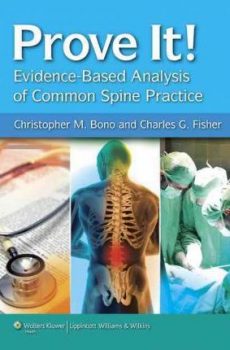
Prove It! Evidence-Based Analysis of Common Spine Practice
10,090.00₹ 2,200.00₹
Prove It! Evidence-Based Analysis of Common Spine Practice offers spine surgeons detailed guidance in using the principles of evidence-based medicine in treatment decisions. The book presents a unique collection of 31 case studies in which noted experts review a patient’s signs and symptoms and relevant images to determine the best-fitting diagnosis and then to develop a treatment plan based on the best available published evidence. The case-based approach allows the reader to see how evidence-based medicine can be directly and practically applied to the care of patients with a variety of disorders

Psychoprosthetics
9,995.00₹ 1,995.00₹
Psychoprosthetics is the study of the psychological aspects of prosthetic use and of rehabilitative processes in those conditions that require the use of prosthetic devices. For people with limb loss, the fitting of a prosthesis can give rise to a variety of issues from functional rehabilitation to quality of life, well-being, participation in society and cosmetic satisfaction. As prosthetic technology continues to become more sophisticated and advanced, there is an onus on those who work with prosthetic users, to be aware of the impact of prosthetics on the ways in which people understand and construct their realities and their attempts to cope with and relate to them. However, despite the broad and increasing interest in psychosocial aspects of prosthetic use and rehabilitation, to date there has not been a complete volume on the topic – this book now addresses that need.
Psychoprosthetics brings together the most recent and exciting research and knowledge in this new field into one easily accessible volume. It contributes to a better understanding of the complex human dynamics involved in prosthetic use and provides an analysis of the practice, research and theory in the field of psychoprosthetics.
Written by some of the leading experts to the field, this informative and cutting-edge text will be of relevance to students, practitioners and researchers from a wide range of disciplines, including prosthetics and orthotics, occupational therapy, physiotherapy, rehabilitation medicine, engineering, nursing and psychology.

Rheumatoid Arthritis
10,900.00₹ 2,500.00₹
This authoritative clinical reference provides comprehensive coverage of all aspects of rheumatoid arthritis. The basics of rheumatoid arthritis are thoroughly covered in order to provide a firm foundation for the main focus of the text: therapy and clinical management of the disease. Practitioners will find detailed information on both pharmacologic and nonpharmacologic courses of management, with special emphasis on the management of pain. More than 100 full-color illustrations provide clear visual support for the concepts in the text. Online references in each chapter, as well as an entire chapter on Web-based information resources, keep this book on the cutting edge of this rapidly evolving field.
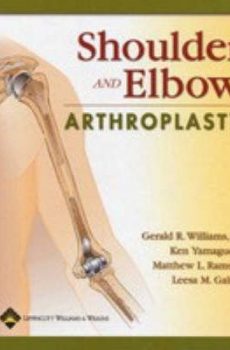
Shoulder and Elbow Arthroplasty
15,900.00₹ 3,850.00₹
Written by the world’s foremost shoulder and elbow surgeons, this volume is the most comprehensive, current reference on shoulder and elbow arthroplasty. The book provides state-of-the-art information on implant design and detailed guidelines—including treatment algorithms—on specific arthroplasty procedures for arthritis, fractures, chronic dislocations, and other disorders. More than 400 illustrations complement the text.
Each main section—shoulder arthroplasty and elbow arthroplasty—has three subsections: implant considerations, technical considerations, and disease-specific considerations. Disease-specific chapters cover surgical anatomy, pathophysiology, preoperative evaluation, indications for surgery, implant choices, surgical techniques, and postoperative rehabilitation. Also included are chapters on complications, revision arthroplasty, arthroplasty with bone loss and limb salvage, and alternatives to replacement arthroplasty. Every chapter includes a “Chapter-at-a-Glance” summary for easy review of the chapter content.
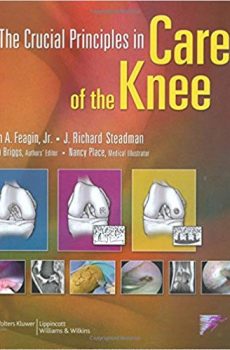
The Crucial Principles in Care of the Knee
15,900.00₹ 5,290.00₹
Written by internationally eminent authorities in sports medicine and knee surgery, this book thoroughly describes and illustrates the key principles in the diagnosis, surgical treatment, and rehabilitation of knee disorders. The information on surgical procedures, outcomes, and complications is evidence-based and documented from a database of over 15,000 cases.
Coverage includes detailed descriptions and illustrations of three new surgical procedures—microfracture for chondral injuries, stimulation of the healing response in ligamentous injuries, and arthroscopic treatment of the degenerative knee. Specific postoperative rehabilitation protocols are included for many surgical procedures. Other topics covered include injury prevention, imaging, functional evaluation, and biomechanics. More than 300 outstanding illustrations complement the text.
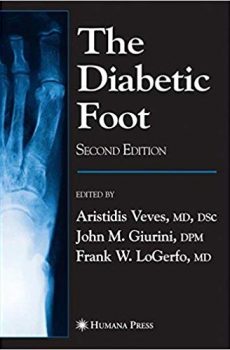
The Diabetic Foot
18,990.00₹ 4,000.00₹
Edited by renown researchers from one of the oldest and most experienced diabetic foot centers in the world, The Diabetic Foot, Second Edition, features established and effective treatments to diabetic foot disease as well as new developments in basic and clinical research. Considerably expanded and updated from the acclaimed first edition, its topics range from proven preventive strategies to cutting-edge wound care techniques that are drawn from new developments such as growth factors and living skin equivalents. Also included are new chapters on the physiology and pathophysiology of wound healing, preparation of wound bed, and new information on the development of foot imaging and treatment. In keeping with the spirit of the first edition, this volume gives the reader a full view of diabetic foot disease and emphasizes the need for a multidisciplinary approach in its management. The Diabetic Foot, Second Edition is an essential reference for the growing problem of diabetes. It will be a great value to diabetologists, endocrinologists, internists, family physicians, podiatrists, vascular surgeons, and orthopedic surgeons in finding a thorough presentation for treating diabetic foot disease.

The Skeletal System
6,650.00₹ 4,195.00₹
The thirteen chapters presented in this book summarize our current understanding of the development, biology, and evolution of the vertebrate skeleton. Written by experts in the field, chapters cover everything from the differentiation of chondrocytes, limb and craniofacial patterning, and the origins and evolution of bone to the genetics of human skeletal disease. It is a useful reference for scientists and clinicians wishing to learn how the skeleton is built and works.
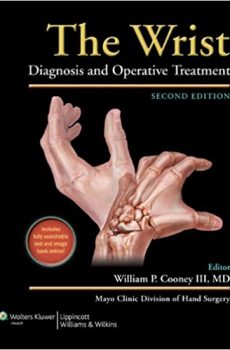
The Wrist: Diagnosis and Operative Treatment
31,900.00₹ 9,990.00₹
The Wrist: Diagnosis and Operative Treatment, Second Edition is the most comprehensive text and reference on diagnosis and treatment of wrist disorders. Written by world-renowned experts from the Mayo Clinic and other leading institutions, this definitive text covers examination techniques for the wrist and diagnosis and treatment of fractures, dislocations, carpal instability, distal radius injuries, rheumatoid problems, soft tissue disorders, and developmental problems. The treatment chapters provide extensive coverage of current surgical techniques. More than 3,000 illustrations complement the text.
This Second Edition has many new contributors, including several international wrist investigators. New chapters cover wrist outcome assessment scores; treatment subtypes for carpal instability (tenodesis/capsulodesis and intercarpal fusions); denervation procedures; acute and chronic instability of the distal radioulnar joint; and evaluation and treatment of axial forearm instability (Essex-Lopresti lesion). Chapters from the first edition have been updated, and several have new authorship.










